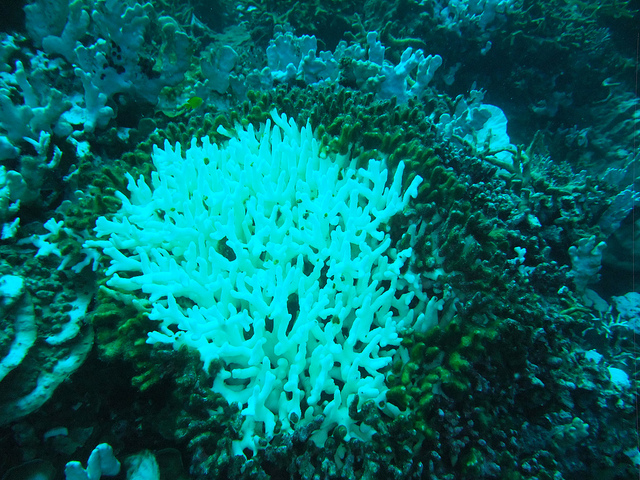Report on Climate Change Impacts on Aquatic Ecosystems and Alignment with Sustainable Development Goals
1. Escalating Climate Extremes and the Imperative for Climate Action (SDG 13)
Current and projected climate data indicate a significant acceleration of extreme weather events, posing a direct threat to global environmental stability and the achievement of Sustainable Development Goal 13 (Climate Action). The established climate patterns that support ecosystems are undergoing a structural shift, with extreme heat becoming the new baseline.
- The World Meteorological Organization (WMO) reports an 80% probability that one of the next five years will set a new global temperature record.
- There is an 86% probability that global temperatures will temporarily exceed the 1.5°C threshold above pre-industrial levels within the next five years.
- In the UK, spring 2025 was the warmest since records began in 1884, with a mean temperature 1.4°C above average.
- Globally, June 2025 was the third-warmest on record, continuing a trend where every June since 2016 has ranked in the top ten warmest.
- Arctic sea ice recorded its lowest maximum extent in 47 years of satellite monitoring, falling 1.31 million square kilometres below the 1981-2010 average.
This evidence underscores the urgency of implementing robust strategies under SDG 13 to mitigate climate change and adapt to its unavoidable consequences.
2. Threats to Freshwater Resources and Terrestrial Ecosystems (SDG 6 & SDG 15)
The intensification of climate change has led to hydrological chaos, characterised by a paradoxical combination of drought and extreme precipitation. These conditions severely compromise water security and the health of freshwater habitats, directly impacting SDG 6 (Clean Water and Sanitation) and SDG 15 (Life on Land).
Key Stressors on Freshwater Systems:
- Drought Conditions: Following the driest spring in over a century, large areas of England have been declared in a state of drought. The Environment Agency warns that without significant intervention, England faces a daily water deficit of nearly six billion litres by 2055.
- Water Abstraction and Pollution: Drought magnifies the negative impacts of existing water abstraction and pollution, reducing the resilience of river ecosystems and threatening the biodiversity they support, a key target of SDG 15.
- Erratic Precipitation: While summers are becoming drier, the frequency of “very wet” months has increased by over 50% since the 1990s. This volatility disrupts natural water cycles and diminishes the capacity of aquatic life to adapt.
3. The Crisis in Marine Environments: A Challenge to Life Below Water (SDG 14)
Marine ecosystems are absorbing significant climate impacts, with rising sea surface temperatures leading to more frequent and intense marine heatwaves. This phenomenon presents a critical threat to marine biodiversity and the sustainable use of marine resources, as outlined in SDG 14 (Life Below Water).
Observations and Impacts:
- Rising Sea Temperatures: Near-coast sea surface temperatures around the UK have increased by nearly 1°C since the 1961–1990 baseline. Five of the ten warmest years for ocean heat have occurred in the last decade (2015-2024).
- Marine Heatwaves: In July 2025, waters in the Celtic Sea, English Channel, and Southern North Sea were classified as a moderate to strong marine heatwave, with temperatures 1.5°C to 3°C above average. Globally, the number of extreme sea surface heat days has tripled over the past 80 years.
- Ecosystem Stress: Elevated temperatures push marine species beyond their thermal thresholds, reducing reproduction, growth, and resilience. This is particularly catastrophic for species already at their thermal limits.
4. Consequences for Aquatic Biodiversity and Food Security (SDG 14 & SDG 2)
The cumulative effects of climate change are causing demonstrable harm to aquatic populations, undermining both biodiversity (SDG 14) and food security (SDG 2: Zero Hunger).
Impacts on Fish Populations:
- Physiological Stress: Warming waters reduce oxygen solubility, placing significant metabolic stress on cold-water species such as salmon and trout, which are foundational to many UK river ecosystems.
- Species Distribution Shifts: Climate-driven changes are altering the composition of marine life in UK waters. Warm-water species are becoming more common, while some cold-affinity species are in decline.
- Disrupted Life Cycles: The synchrony between fish larvae and their plankton prey is breaking down, affecting recruitment rates and the long-term viability of fish stocks.
- Threats to Fisheries: Globally, extreme high-temperature events in Exclusive Economic Zones are associated with a 6% decline in catch potential, representing a growing threat to global food security.
Conclusion and Policy Recommendations for SDG Alignment
The United Kingdom is experiencing a structural climate shift that is fundamentally reshaping aquatic ecosystems. The escalating impacts on rivers and seas directly challenge the nation’s ability to meet its commitments under Sustainable Development Goals 6, 13, 14, and 15. A strategic, long-term policy response is required to build resilience and mitigate further degradation.
Recommendations:
- Develop and implement a national water policy that places ecosystem health and climate resilience at its core, ensuring the sustainable management of water resources in line with SDG 6.
- Enforce stricter controls on water abstraction and pollution to enhance the resilience of river systems and protect the freshwater biodiversity central to SDG 15.
- Prioritise the conservation and restoration of marine and coastal ecosystems to counteract the effects of marine heatwaves and protect Life Below Water, as mandated by SDG 14.
- Strengthen national and international efforts to combat the root causes of climate change to secure long-term progress across all environment-related SDGs.
Analysis of Sustainable Development Goals in the Article
1. Which SDGs are addressed or connected to the issues highlighted in the article?
-
SDG 13: Climate Action
- The entire article is centered on the impacts of climate change. It explicitly discusses the increasing frequency and intensity of extreme weather events, such as record-breaking heat, droughts, and marine heatwaves. It cites data from the World Meteorological Organization about the probability of surpassing temperature records and the 1.5°C warming threshold, directly linking these phenomena to a “structural climate shift.”
-
SDG 14: Life Below Water
- The article extensively details the consequences of climate change on marine and aquatic life. It describes rising sea surface temperatures, the occurrence of “marine heatwave conditions,” and the direct impact on fish populations. It mentions that “UK marine life is already showing signs of climate-driven change,” including shifts in species distribution, reduced reproduction and growth, and declines in fish biomass and catch potential, which are core concerns of SDG 14.
-
SDG 15: Life on Land
- This goal is relevant through its focus on inland freshwater ecosystems. The article highlights the severe stress on rivers due to drought, warming temperatures, and pollution. It states that “cold-water species like salmon and trout… face a double blow: shrinking, warming rivers and collapsing seasonal rhythms.” The call to “protect our rivers’ biodiversity” directly aligns with the objectives of protecting and restoring freshwater ecosystems under SDG 15.
-
SDG 6: Clean Water and Sanitation
- The article addresses issues of water scarcity and quality. It mentions that drought has “magnified the impacts of abstraction and pollution.” It also points to a future crisis, citing an Environment Agency warning that “England will have a daily shortage of nearly six billion litres of water per day by 2055.” This connects to the sustainable management of water resources and addressing water scarcity, which are key components of SDG 6.
2. What specific targets under those SDGs can be identified based on the article’s content?
-
SDG 13: Climate Action
- Target 13.1: Strengthen resilience and adaptive capacity to climate-related hazards and natural disasters in all countries. The article’s description of the “new normal” of extreme weather (heatwaves, droughts, erratic rainfall) and the strain on ecosystems highlights the urgent need to build resilience.
- Target 13.2: Integrate climate change measures into national policies, strategies and planning. The concluding statement, “We need a long-term strategy that puts ecosystem health and climate resilience at the centre of national water policy,” is a direct call for this target.
-
SDG 14: Life Below Water
- Target 14.2: By 2020, sustainably manage and protect marine and coastal ecosystems to avoid significant adverse impacts. The article’s focus on the damage caused by marine heatwaves to UK coastal waters, the Celtic Sea, and the English Channel directly relates to this target.
- Target 14.4: By 2020, effectively regulate harvesting and end overfishing… in order to restore fish stocks. The article notes that extreme heat events lead to “biomass declines” and a drop in “catch potential,” which impacts the long-term viability and health of fish stocks.
-
SDG 15: Life on Land
- Target 15.1: By 2020, ensure the conservation, restoration and sustainable use of terrestrial and inland freshwater ecosystems and their services, in particular forests, wetlands, mountains and drylands. The article’s central plea to “cut abstraction and clean up our rivers” and protect river biodiversity falls squarely under this target.
- Target 15.5: Take urgent and significant action to reduce the degradation of natural habitats, halt the loss of biodiversity and, by 2025, protect and prevent the extinction of threatened species. The discussion of threats to “cold-water species like salmon and trout” and the general observation that “Fish are disappearing” directly addresses this target.
-
SDG 6: Clean Water and Sanitation
- Target 6.4: By 2030, substantially increase water-use efficiency across all sectors and ensure sustainable withdrawals and supply of freshwater to address water scarcity. The article’s mention of drought, water abstraction, and the projected “daily shortage of nearly six billion litres of water per day by 2055” connects directly to this target.
- Target 6.6: By 2020, protect and restore water-related ecosystems, including mountains, forests, wetlands, rivers, aquifers and lakes. The article’s primary argument is the need to protect rivers from the combined impacts of climate change, abstraction, and pollution.
3. Are there any indicators mentioned or implied in the article that can be used to measure progress towards the identified targets?
-
Indicators for Climate Change (SDG 13)
- Global Temperature Anomaly: 86% chance of one of the next 5 years being 1.5°C warmer than pre-industrial levels.
- Record Temperature Events: June 2025 being the hottest on record in England; Spring 2025 being the warmest UK spring since 1884.
- Sea Ice Extent: Arctic sea ice maximum extent being 1.31 million sq km below the 1981-2010 average.
- Sea Surface Temperature (SST) Anomaly: Near-coast UK SST increase of nearly 1°C since 1961–1990; Mediterranean SST up to 6°C above average.
- Frequency of Extreme Weather: The number of days with extremely high temperatures has “doubled, tripled, and quadrupled… since the 1960s.”
-
Indicators for Aquatic Ecosystem Health (SDG 14, 15, 6)
- Water Scarcity: Projected daily shortage of nearly six billion litres of water per day by 2055 in England.
- Drought Status: Official drought declarations in large parts of the UK (East and West Midlands, North West, Yorkshire).
- Biodiversity and Species Distribution: Appearance of warm-water (Lusitanian) fish in British waters and decline of cold-affinity species.
- Fish Stock Health: 77% of exploited fish species experiencing biomass declines during extreme heat events; catch potential dropping by around 6%.
- Marine Heatwave Frequency: The number of days of extreme sea surface heat has “tripled over the past 80 years.”
4. Summary Table of SDGs, Targets, and Indicators
| SDGs | Targets | Indicators Identified in the Article |
|---|---|---|
| SDG 6: Clean Water and Sanitation | 6.4: Address water scarcity and ensure sustainable withdrawals.
6.6: Protect and restore water-related ecosystems. |
|
| SDG 13: Climate Action | 13.1: Strengthen resilience to climate-related hazards.
13.2: Integrate climate change measures into national policies. |
|
| SDG 14: Life Below Water | 14.2: Protect marine and coastal ecosystems.
14.4: Restore fish stocks. |
|
| SDG 15: Life on Land | 15.1: Conserve and restore inland freshwater ecosystems.
15.5: Halt biodiversity loss and protect threatened species. |
|
Source: wildfish.org







